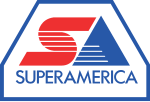Tartan Senior High School
1971 establishments in MinnesotaEducational institutions established in 1971Public high schools in MinnesotaSchools in Washington County, Minnesota

Tartan Senior High School is a public secondary school in Oakdale, Minnesota, United States. It is a member of Independent School District 622. Since its opening in 1971, Tartan has grown to more than 1,800 students supported by 120-plus teachers, administrators, aides, custodians, administrative assistants and other support staff. Tartan offers a comprehensive academic program consisting of core courses as well as a wide range of electives in the fine arts, industrial technologies, business education, world languages and cultures, and others. The school mascot is the Titan and its colors are Black, Silver, White and Royal Blue.
Excerpt from the Wikipedia article Tartan Senior High School (License: CC BY-SA 3.0, Authors, Images).Tartan Senior High School
7th Street North,
Geographical coordinates (GPS) Address Nearby Places Show on map
Geographical coordinates (GPS)
| Latitude | Longitude |
|---|---|
| N 44.960277777778 ° | E -92.971944444444 ° |
Address
7th Street North
7th Street North
55128
Minnesota, United States
Open on Google Maps





